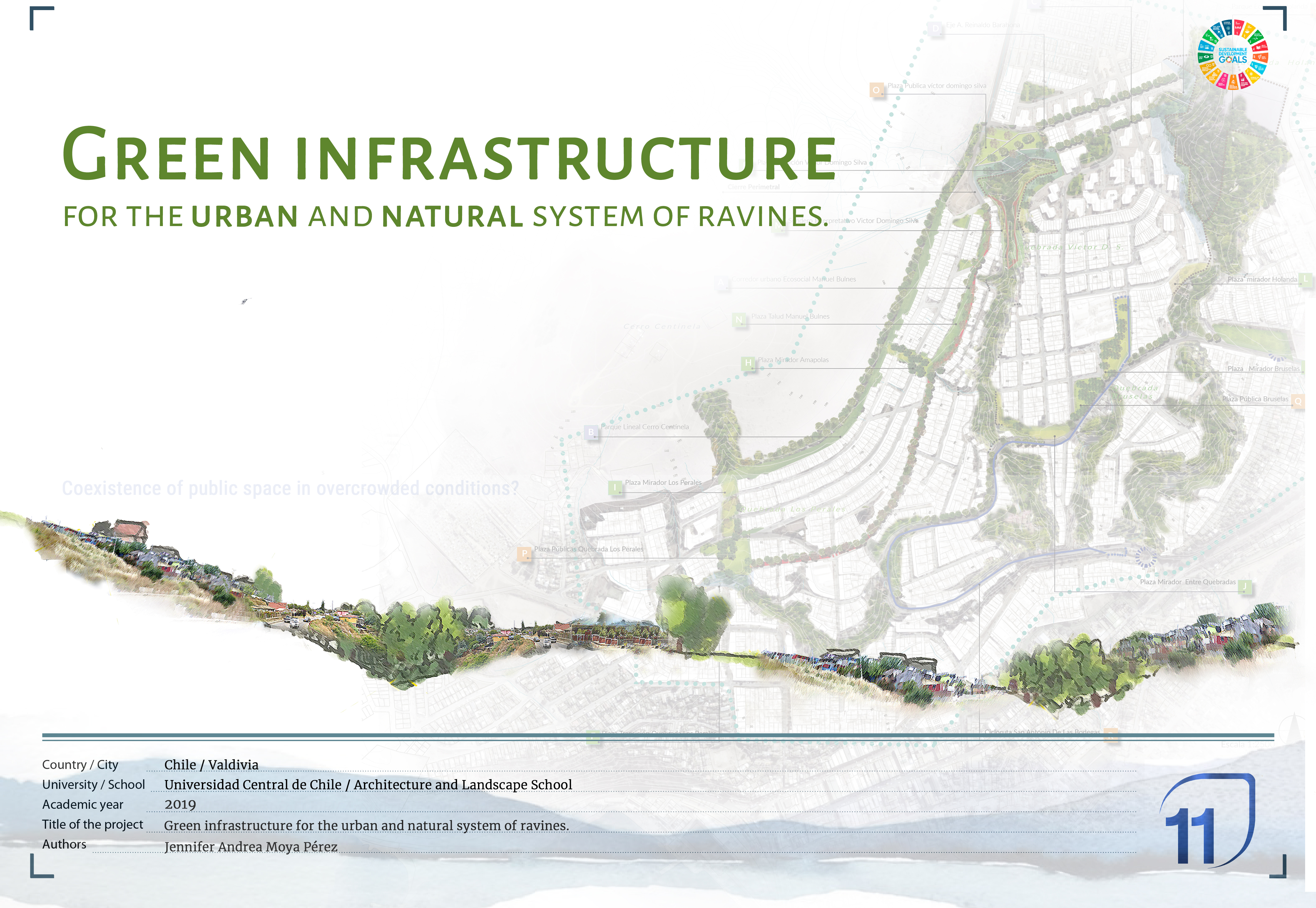
Green Infrastructure: for the urban and natural system of ravines
Proyecto de título
Universidad Central
The green infrastructure project addresses ravines, urban voids, streets with potential for public space. The social leaders of the study area indicate that they want to use the ravines (as public space), but they do not know how, they do not have the resources, tools or knowledge to organize these spaces.
The ravines are natural corridors of biodiversity. Furthermore, they have the potential to offer social functions such as recreation spaces, contact with nature, hiking and learning. The effects caused by a neglected urbanization end up altering its operation and suppressing the ecological services they provide.
Systems theory is used to make a project analogy (Bertalanffy, 1976). We will understand the ravines and the urbanization as two complex systems. To strengthen a system, it is necessary to generate connection networks, which are non-existent or diffuse in the study area, that connection generates a link between these systems, strengthening them.
In the study area there are two different systems, the urban system and the natural ravine system, both share a territory, which is their common objective, but without any link to achieve a dynamic balance in the landscape, in which they must coexist. . In order for this coexistence to be harmoniously possible, the objective was to create a link between the urban system and the natural system of ravines.
and this link is the green infrastructure that mediates between the urban system and the natural ravines system, as a regulatory mechanism that mitigates the risk of imbalance.
